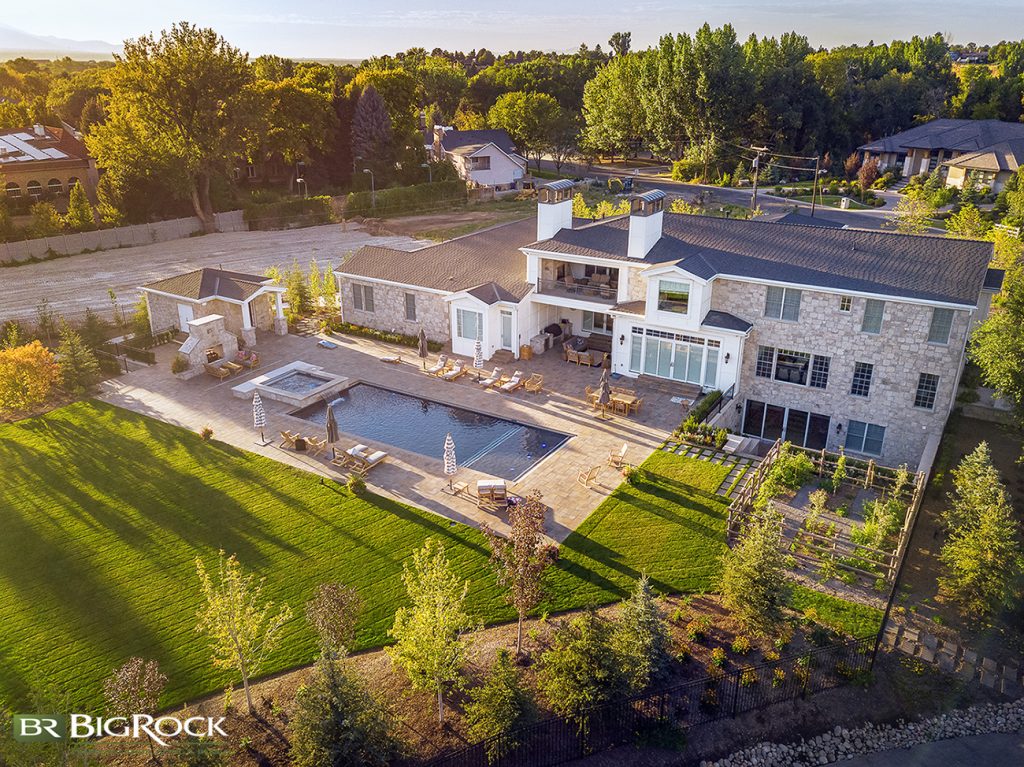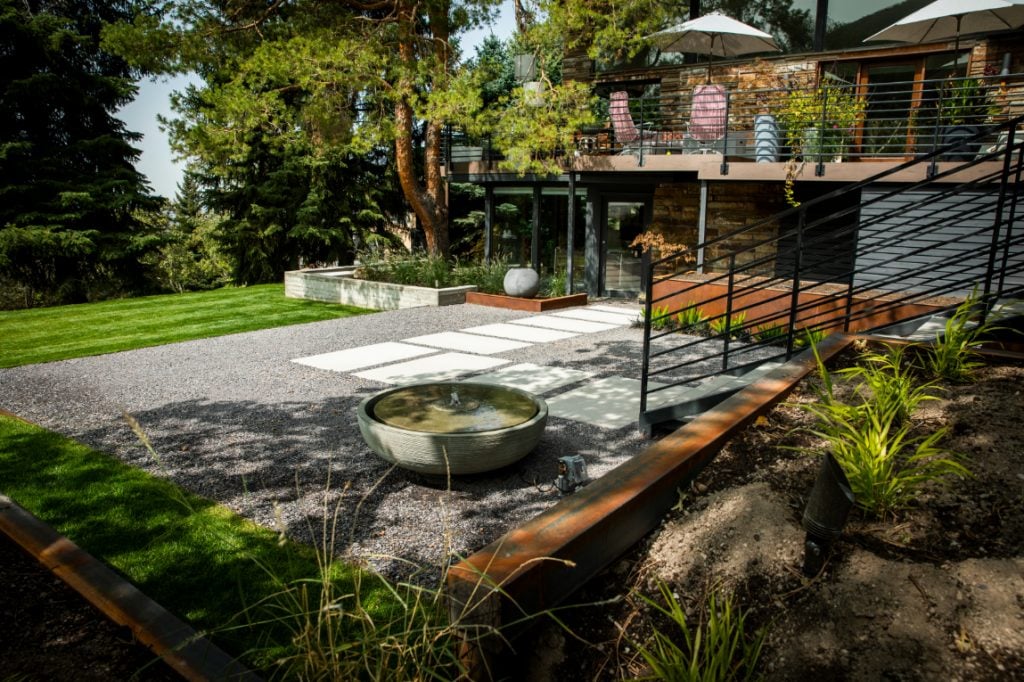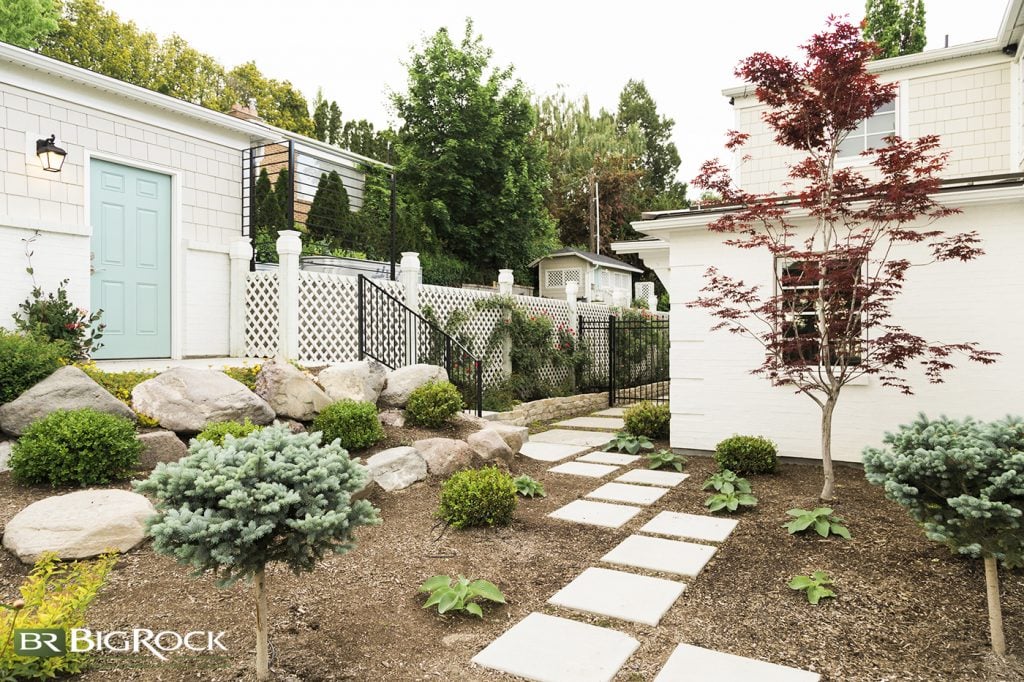The drought is hitting harder than ever this year, and many homeowners are starting to worry about the future of their yards. If you’re one of those people pre-mourning the death of their beloved yard babies, don’t panic! There are things you can do right now to help your yard withstand the drought and come out the other side more enjoyable than ever. Keep reading to find our checklist for how to care for your yard during a drought (and right now!) and how to prepare for it.

Our Checklist For Your Yard During A Drought
It’s hard to watch a drought take its sometimes deadly toll on your beautiful landscape design. But the good news is that you don’t need to stand idly by just waiting for the worst to happen. Try these 14 tips for your yard during a drought, and you’ll see it through to the other side, better (and hopefully greener) than ever!
1: Pass On Greenery Enhancing Projects For Now
During a drought is not the right time for new landscaping projects—at least not ones that add stress to already struggling plant life (like aeration or laying new sod). Planting trees, shrubs, and flowers should also wait until conditions are more conducive to good growth and more typical watering patterns.
2: Don’t Put Off Fertilizing
Don’t skip the fertilizer! Feed your plants with high-nitrogen fertilizer during a drought. You still need to make sure your plants are getting what they need, even when water is limited.
3: Mulch Rather Than Bagging
Another smart yard tip during a drought is to provide a little extra nutrition and moisture to your grass by allowing your mower to mulch clippings directly back onto the lawn rather than bagging it. This is one small way to help make sure your grass retains every ounce of water it can while watering restrictions are in place in your area.
4: Mow High
One way to make sure your drought-stressed lawn stays as healthy as possible is to mow with your blade at a high setting. Keeping grass blades long will allow the roots to grow deep and can also help keep the topsoil cooler to ensure better health and longevity for your lawn. Even if things go brown eventually, there is a good chance that taking this precaution will help ensure that a dormant lawn will come back to life as conditions improve.
5: Keep Landscaping Equipment Sharp
Taking good care of your landscaping equipment, particularly anything that cuts (lawn mower blades, edgers, etc.) is key to helping your yard survive a drought. Mowing with sharp blades will help prevent damage to grass blades—damage that could necessitate up to 60% more water to fully recover from.
RELATED: The Best Xeriscaping Ideas For Your Yard
6: Manage Weed Growth
Another thing that can cause trouble for your already drought-stressed landscaping is weed overgrowth. Not only are those unwanted plants stealing nutrients and soil space, but they’re busy drinking what little water your lawn and other landscaping are getting during dry times. Keep weeds in check to ensure that the plants you want to survive the drought stand a chance.

7: Water Early, Deeply, & Infrequently
The best time to water during a drought is early in the morning before the sun has a chance to scorch your landscaping and evaporate water before it soaks into the soil. You’ll need to water your lawn, shrubs, and trees during a drought deeply but infrequently, and always according to local ordinances. Being a responsible waterer is key to not only your landscape’s survival but the well-being of other landscaping and the continued availability of natural resources in your area.
8: Hold Off On Pruning
With your trees and shrubbery already under stress from drought conditions, you’ll want to hold off on pruning to avoid shocking them into an unrecoverable state. At best, pruning live branches on your trees and shrubs will force them to expend energy to heal the cuts, thus taking away critical resources for the roots and heart of the plants.
9: Check Your Sprinklers
Sprinklers should not be standardized—meaning every zone isn’t shouldn’t be running for the same length of time, or even on the same days. Do a “background check on all zones” by answering the following questions:
- Are all sprinklers pointing AT the grass?
- Are the sprinklers as efficient as possible?
- Are you using different zones to water? Shady areas need less water, less shady need more.
- Are you using the correct nozzles and heads?
- Change your planter beds to a variety of drip emitter heads which allows water to flow at different rates and be in the same zone.
- Are your sprinklers equipped with ET sensors? ET (evapo evapotranspiration) sensors gather information about the evaporation from the soil, transpiration by plant materials, as well as wind and rain forecasting from local weather sources to make real-time watering adjustments.
10: Deadhead Your Flower Garden
Unlike trees and shrubs, a drought may be a good time to “cut back” on your flower garden. Once blooms have come and gone, removing them (or deadheading) can help conserve much-needed energy and reduce the plants’ need for extra water. Don’t worry—your perennial plants should come back with fervor next year.
11: Mulch Your Garden Beds
Consider adding a fresh layer of mulch to garden beds after a good watering. This can help lock in water and keep the sun from drying out your topsoil. It also adds an extra layer of protection for your plant roots against sun exposure.
12: Trust Nature
When in doubt, allow nature to run its course. We all love perfectly manicured lawns and plenty of greenery but trying to force landscaping to ignore the reality of drought conditions may not work out for the best. If your landscaping does take a brown turn, trust that it is responding to harsh conditions and knows how to come back from them if treated well.
13: Make Drought-Friendly Plans For Next Year’s Landscaping
If you find that this year’s drought really does take a painful toll on your landscaping, it may be time to reconsider a smarter, more drought-resistant plan for the future of your yard. Maybe that means removing non-native plants and replacing them with ones better suited to your area. It could mean installing drip irrigation for more efficient watering. Or maybe it’s time you gave xeriscaping a chance.
WATCH NOW: What Is Xeriscaping?

14: Consider A Park Strip Redesign
One part of the yard that can get ignored in landscape design is the park strip between your sidewalk and the street. Often, they’re boring grass strips that use a lot of water and provide zero customization for your landscape style. But switching to a native plant-based xeriscaping park strip design can be one of the smartest things you do for your yard during a drought—not to mention your wallet!
5 Reasons To Redesign Your Parking Strip For The Drought
Redesigning your parking strip can make a big impact on efforts to reduce stress on your yard during a drought. But it’s not just your landscaping that will thank you. Here are some of our favorite reasons why updating your park strip with xeriscape design is a great idea for you.
- You’ll use less water. An average turf-based park strip will annually use between 5,000 and 8,000 gallons of water to keep it green. Reducing that number drastically with xeriscape design will allow that much-needed water to be used where it is needed most.
- You’ll cut down on maintenance. We often hear that people hate having to mow their park strip, especially if there are trees involved. Xeriscape design means planting smaller, native plants that require little to no maintenance to thrive and, yes, NO mowing is required.
- You’ll get to personalize your landscaping. A park strip is a perfect place to set the tone for your home’s landscaping as it’s directly in front of your house. Why not create a space that reflects your style and either establishes a mood for the rest of your yard or becomes a unique highlight you can enjoy every time you come home?
- You’ll save money. Those 5,000+ gallons of water aren’t free, and maybe saving money on the water bill alone every month should entice you to switch to a xeriscape park strip. But above and beyond the monthly savings, there are programs like Flip Your Strip that will even pay to help with the greener redesign. Updated landscaping that you don’t have to pay for? Yes, please.
- You’ll encourage others to go more green. Have you ever thought about a xeriscaped yard design but didn’t quite have the vision for how it would turn out? We’ve noticed that once one person in a neighborhood goes xeri, it encourages others to make the change, which can benefit entire communities.
Convinced that maybe a xeriscape parking strip (or side yard or entire backyard!) could be for you, but not sure where to start? Big Rock Landscaping has your back.

Have More Drought Questions About Your Yard?
If you’re ready for a landscape remodel to prepare your yard for annual drought conditions, you’ve come to the right place. But don’t start panicking if you like the look of lawn and green landscape. You don’t have to tear out your green plants and lawn during a drought IF you are watering correctly! But it depends on how hands-on you want to be—when homeowners are facing drought conditions, it requires more than a “set it and forget it” mindset to process and manage your landscaping. It might make sense to make your yard more drought tolerant and consider replacing some of your thirsty areas with more hearty, drought-friendly plants and xeriscape. Not sure which direction to go? Hiring a landscaping professional is a great place to start.
At Big Rock Landscaping, we’re not only experts on gorgeous landscape design, but we know exactly how to accomplish a look you’ve always wanted while using the right native plants and proper processes to ensure a long-lasting landscape–no matter the weather.
With Big Rock, you get a talented team of expert communicators, designers, and installers that have your back every step of the way—from vision to final touches, and even maintenance.
Ready for your dream yard to come to life? Contact Big Rock Landscaping today!

